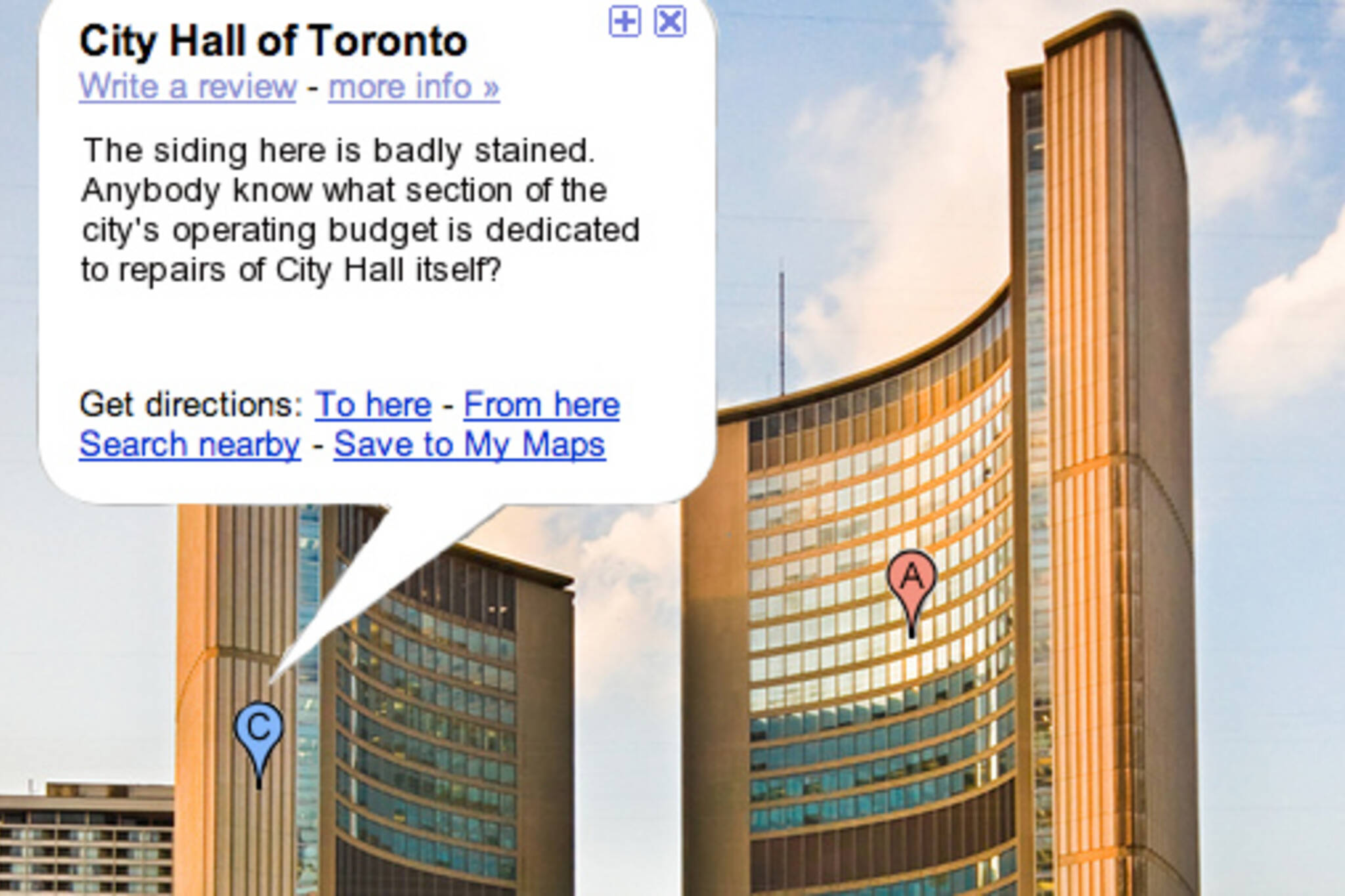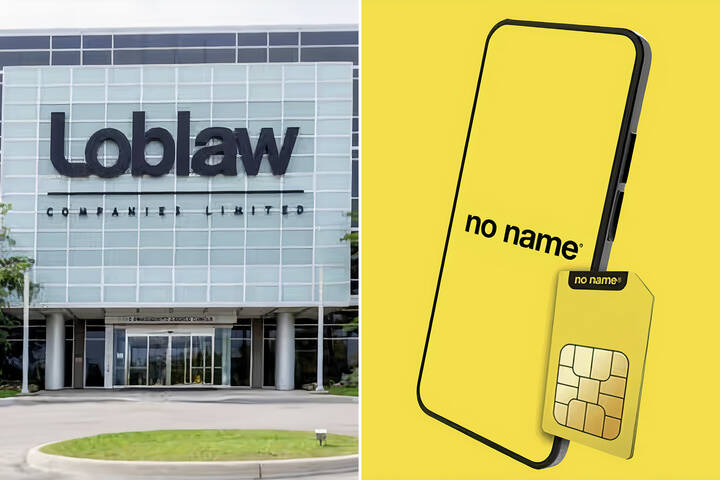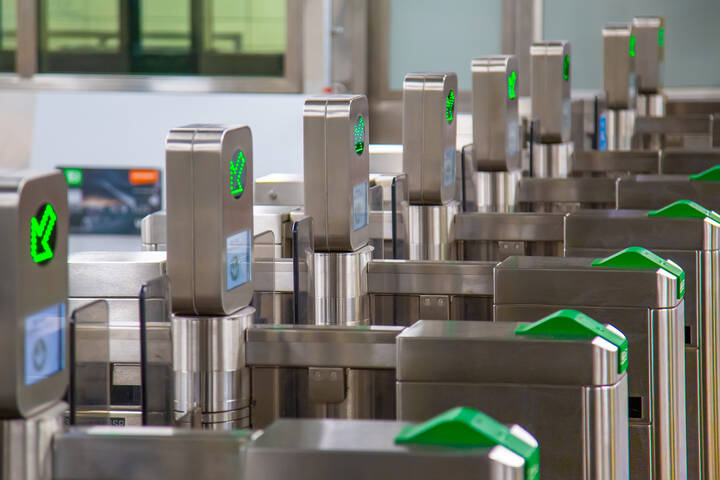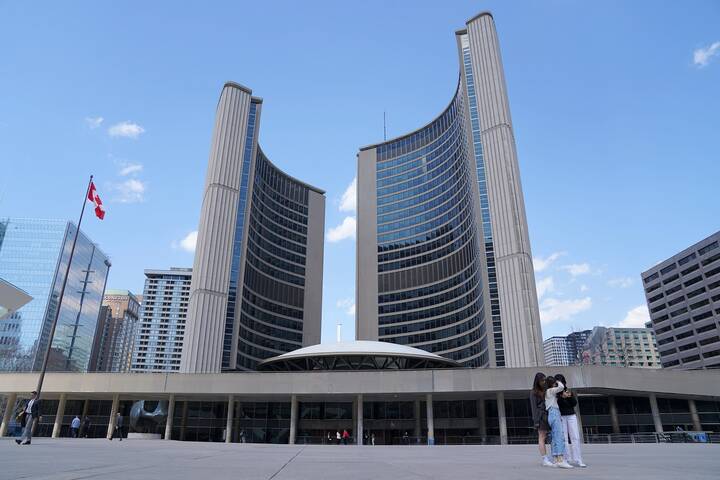
Geotagging Toronto
Wired Torontonians have an embarrassment of well-mapped riches: in just the last two weeks alone, we've seen the launch of two major user-defined maps. 360EXtENdEd matches personal stories to neighbourhoods across the GTA, and the The Star's neighbourhood map 2.0, which divides Toronto into 170 (at last count) cleanly delineated neighbourhoods. The Star's web editor Patrick Cain has been a powerhouse of cartography, producing a Map a Week since June 2008, including one of the first homicide maps on a North American website.
360EXtENdED and Map a Week digitally remap our city in new and interesting ways. Now there's a third geotagging platform adding to our urban fervour in 2009: The ChangeEngine, where users will be able to show-and-tell neighbourhood issues like needed street repairs. On Monday night its creators tweeted an open call for user-contributed sample data. They've gotten nearly 100 submissions in a 24 hours period. The e-vangelists like Ryerson President Sheldon Levy, may be right... is Toronto becoming a hotspot for digital urbanism?
When the ChangeEngine goes fully public, it will act as a location-specific issue tracker, where anyone can submit a problem they have in their neighbourhood (for instance, one of the two issues I submitted is that the intersection of Keele and Bloor smells like septic tank), search out support from within their community, and then get that issue fixed. Like many socially-driven technology platforms, the ChangeEngine will chew up aggregate user data and spew out relevant statistical analysis. But where Facebook sells off this highly-accurate information to advertising and credit firms in order to generate its revenue stream, what the ChangeEngine will engineer is social change, says team coordinator Adam Thody (@thody). "With the ChangeEngine we can determine what issues are relevant," he told me by phone last night. "We can also do some correlation. For instance, is graffiti more prominent in areas with bad weathering. Now all we need is some data."
This is where we can pitch in. Before the site becomes operational, Adam and his coworkers are asking Toronto to add their own suggestions about what needs fixing in their neighbourhoods. With this sample data (he's hoping for 250 submissions) they can determine the best way to present an interactive venue for this kind of information to be created and shared.
So why all this in the last few months? Why three new geotagging platforms in the last two weeks? "I don't think there's really a technical shift," said Adam when I asked him. I think it might be an ideological shift. People want to contribute to social good," he said. But then he laughs and says "it may be just be coincidence that all of these things are coming out at the same time."
It seems like every day I'm stumbling my way into a new web-service that leverages the GoogleMaps API (Application Programming Interface) in some new and highly-functional way. The field has exploded since Paul Rademacher wrote the pioneering program that combined Craigslist and Google Maps to create Housingmaps (and one of the web's first mashups). Now there's Wikimapia and Ian Steven's Toronto Transit Map. There's Everyblock, one of the most ambitious projects to date, unfortunately American, which uses a technology called Openlayers in place of GoogleMaps. PeopleFinder was an early project to help people after Katrina reconnect with family. And there's FixMyStreet, a British project from which ChangeEngine borrowed its mission of improving our urban landscape by crowdsourcing pothole locations, broken signage, and other indicators of urban neglect. I assembled my first custom map for blogTO, a map of tobogganing hills, here.
Not all of these examples are specific to Toronto, but a lot of them are, more perhaps than a city our size should expect. But the City and its institutions have historically shown much less interest in new technologies than a city our size deserves. For instance, Toronto is not yet participating in GoogleTransit, and independent projects like the Toronto Transit Map flourished because the TTC couldn't produce a competent map on its own.
But this is changing. The TTC is now on Twitter (twice!: @bradttc + @ttcupdates) and writes its own dashboard and desktop widgets to stay in contact with its wired rider-base. 360EXtENdED, launched just before our city's 175th birthday, and is not only big-M Municipal, but sexy in its layout. At least three city councillors are on Twitter, and @mayormiller tweets and twitpics more often than I do. Not to mention that the City seems to be serious about an open data project. Sheldon Levy is probably on to something when he talks about Toronto as a digital hub, alive with the hum of cloud computing and server farms.
Photo by bensonkua from the blogTO flickr pool.
Latest Videos
Latest Videos
Join the conversation Load comments







